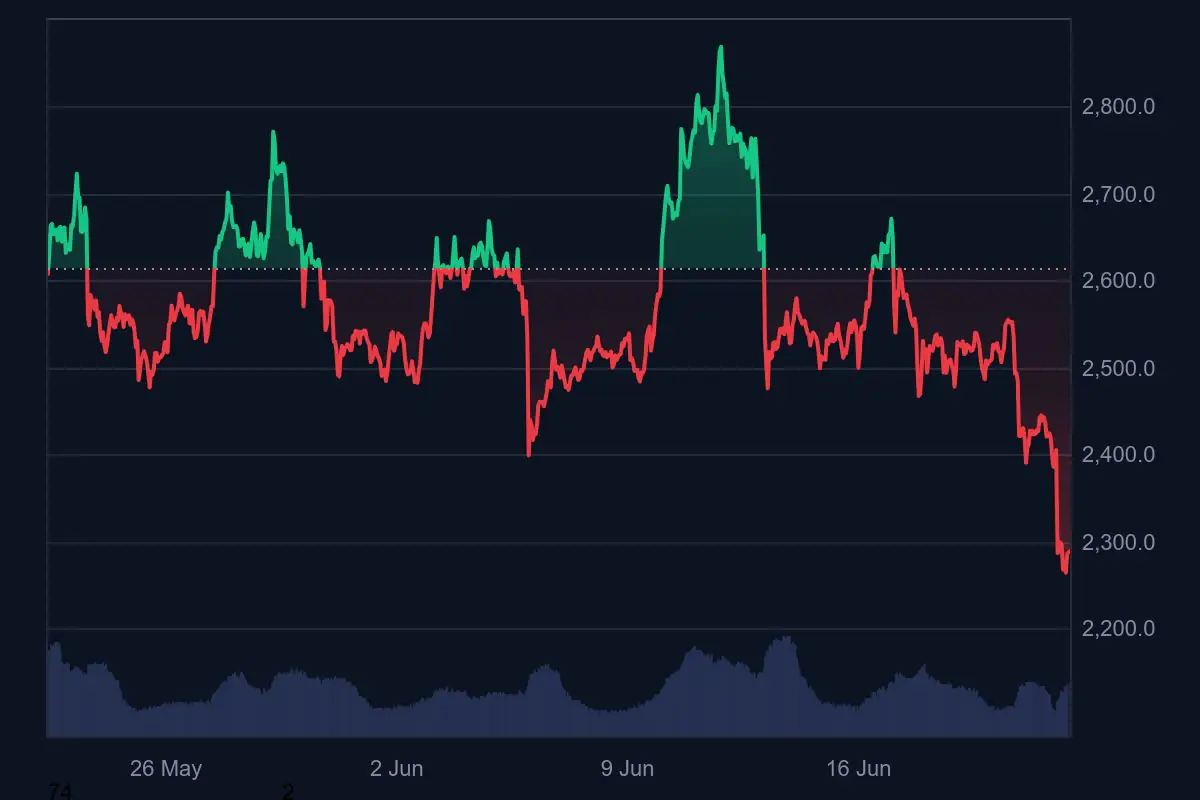Ethereum’s price has dipped below the crucial $2,300 mark, currently trading at $2,286.84, representing a 14.02% decline over the past month.
The cryptocurrency is caught between a tug-of-war of bearish macroeconomic forces and technical resistance versus promising protocol upgrades and robust institutional interest.
While the short-term outlook remains neutral, a long-term bullish sentiment persists.

Key Factors Influencing Ethereum’s Price
1. Protocol-Specific Catalysts: The Pectra Upgrade
The recent Pectra upgrade in May 2025 is a significant bullish catalyst for Ethereum. This upgrade introduced several key improvements, including raising validator staking limits to 2,048 ETH (EIP-7251), enhancing Layer 2 (L2) data capacity (EIP-7691), and introducing smart accounts (EIP-7702). Although network activity hasn’t seen an immediate spike, these foundational changes are crucial for paving the way for increased institutional staking and the broader growth of decentralized applications (dApps). Currently, 28.3% of the total ETH supply is staked, with whales controlling a significant 49% of the circulating supply. Higher staking rewards under the Proof-of-Stake (PoS) mechanism could further tighten supply if adoption accelerates.
2. Market & Macroeconomic Headwinds
The broader macroeconomic environment presents significant challenges. The U.S. Federal Reserve’s decision on June 18 to maintain interest rates with no cuts planned for 2025 has put downward pressure on risk assets, including ETH, which fell 3.1% following the announcement. Tighter liquidity conditions typically hinder cryptocurrency growth. Geopolitical tensions, such as the U.S.-Iran airstrikes on June 21, also triggered a drop in ETH’s price to $2,400. While historical patterns suggest recoveries post-crisis, these events add volatility and uncertainty.
3. Technical Outlook: Key Levels and Momentum
From a technical perspective, Ethereum faces immediate resistance at $2,723, corresponding to the 23.6% Fibonacci retracement level. Key support lies at $2,222 (a swing low). A decisive close above $2,855 could potentially open the path to $3,039. The 14-day Relative Strength Index (RSI) is at 36, indicating a neutral stance, but the Moving Average Convergence Divergence (MACD) histogram at -45.75 signals bearish pressure. Ethereum needs to firmly hold the $2,400 level to avoid retesting the May low of $1,385.
4. Institutional Sentiment and Whale Activity
Despite macro pressures, institutional interest in Ethereum remains notably strong. Spot ETH ETFs have seen 16 consecutive days of net inflows as of June 13, contrasting with recent outflows from Bitcoin ETFs. Major players like BlackRock and Fidelity now hold a combined 78.2 million ETH through their ETFs. While a recent transfer of 5,000 ETH to Coinbase on June 21 raised sell-side risks, accumulation wallets have concurrently hit record lows (16.33 million ETH), suggesting a long-term holding strategy by some large investors.
In conclusion, Ethereum’s ability to break free from its current price range and move higher hinges on its capacity to balance ongoing macroeconomic headwinds with the benefits of its technological evolution. While the full impact of the Pectra upgrade may take several months to materialize, sustained institutional ETF inflows and growing staking demand could very well drive a significant rebound for Ethereum throughout 2025.









